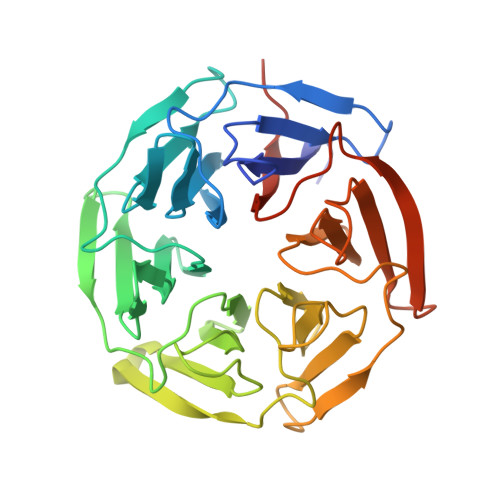Structure-Guided Conformational Restriction Leading to High-Affinity, Selective, and Cell-Active Tetrahydroisoquinoline-Based Noncovalent Keap1-Nrf2 Inhibitors.
Qin, Y., Poulsen, C., Narayanan, D., Chan, C.B., Chen, X., Montes, B.R., Tran, K.T., Mukminova, E., Lin, C., Gajhede, M., Bullock, A.N., Olagnier, D., Bach, A.(2024) J Med Chem 67: 18828-18864
- PubMed: 39418396
- DOI: https://doi.org/10.1021/acs.jmedchem.4c01221
- Primary Citation of Related Structures:
9F2P, 9F2Q - PubMed Abstract:
Inhibition of the protein-protein interaction between Kelch-like ECH-associated protein 1 (Keap1) and nuclear factor erythroid 2-related factor 2 (Nrf2) has been recognized as an attractive approach for treating oxidative stress-related diseases. Here, we present a new series of noncovalent Keap1-Nrf2 inhibitors developed by a conformational restriction strategy of our fluorenone-based compounds previously identified by fragment-based drug discovery. The design was guided by X-ray cocrystal structures, and the subsequent optimization process aimed at improving affinity, cellular activity, and metabolic stability. From the noncyclic compound 7 ( K i = 2.9 μM), a new series of tetrahydroisoquinoline-based Keap1 inhibitors with up to 223-fold improvement in binding affinity ( 57 , K i = 13 nM), better metabolic stability, and enhanced cellular activity was obtained. In addition, the compounds showed selectivity for the Keap1 Kelch domain across a panel of 15 homologous proteins. We thereby demonstrate the utility of cyclic rigidification in the design of potent and more drug-like Keap1-Nrf2 inhibitors.
Organizational Affiliation:
Department of Drug Design and Pharmacology, Faculty of Health and Medical Sciences, University of Copenhagen, Universitetsparken 2, DK-2100 Copenhagen, Denmark.


















